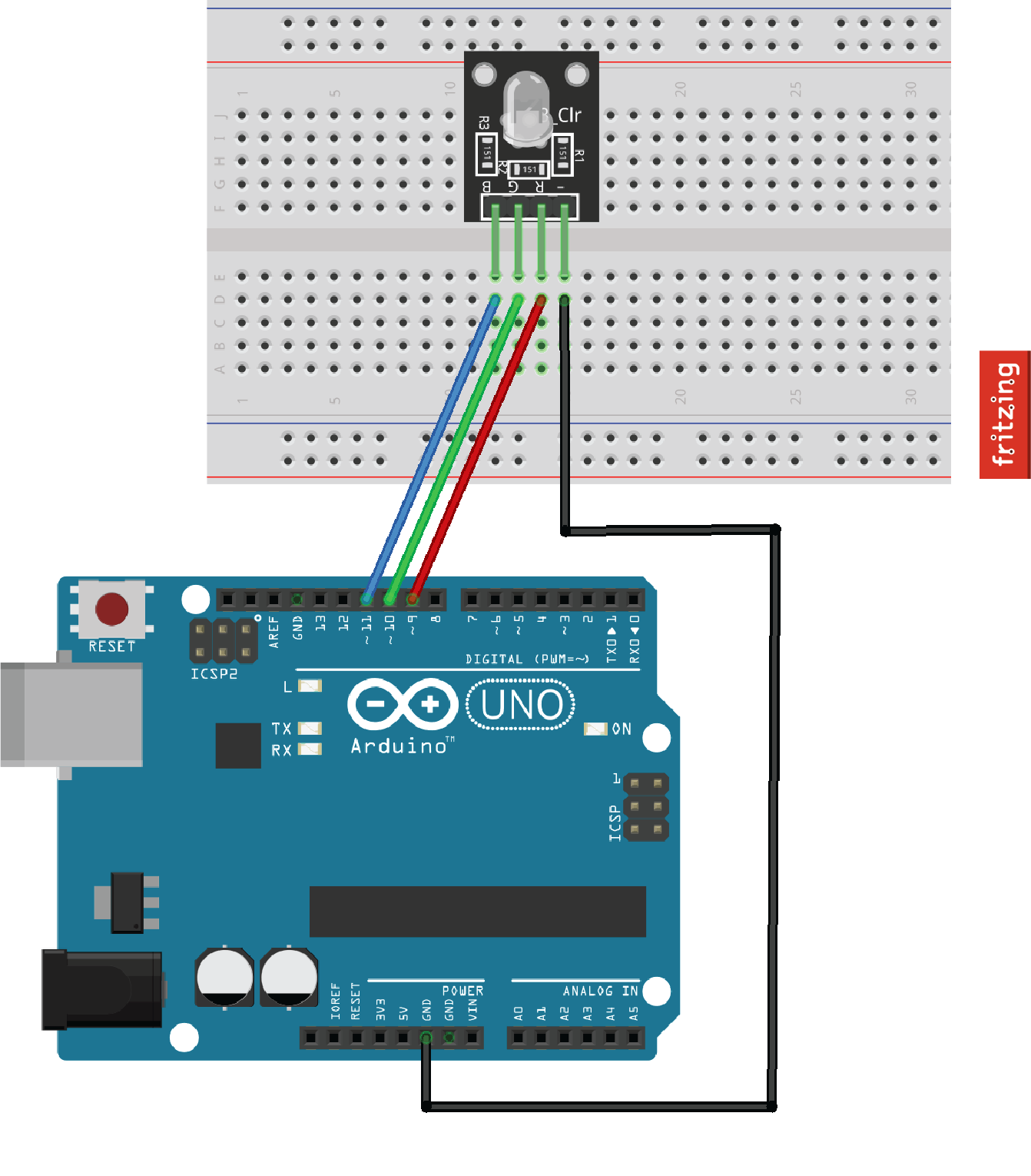
A simple combination to produce custom colors is shown below: We have to mix the RGB colors to produce custom colors. It can be represented as RGB= where 1 represents the maximum voltage, and 0 represents no voltage. When we want to produce a red color, we provide 5 volts to the red terminal. When using the common anode type, we ground the terminal of the color that we want to switch on. If we want to switch on the red LED, we apply 5 volts to its terminal/channel. Since diodes have two parts, P-side and the N-side, separated by a p-n junction, P-side is the anode, and the N-side is the cathode.įor our case, we have used the common cathode. Likewise, the cathode terminal is common for all the color channels for the common cathode. As the name suggests, the anode is common for all the color channels for the common anode. There are two types of RGB LED: common anode and common cathode. The maximum current that our LED can handle is 20mA per color channel. We also have three resistors to limit the current. red, green, and blue, we use a single LED known as common cathode RGB LEDs. The image above shows how we connect the Arduino to the breadboard. The circuit diagram to implement the color production is shown below: In Matlab, we use the command writePMWVoltage(board, pin, value). In an Arduino IDE, the voltages of these PMW pins can be written by analogwrite(pin, value).

Arduino produces this voltage variation by varying the duty cycle of a square wave. The pins can generate a dc voltage in 256 variations since it is an 8-bit controller (2^8).

They can give any voltage in the range 0-5V with the help of PMW. This is because they are supported by pulse width modulation (PMW). In the digital input/output, pins 11, 10, 9, 6, 5, 3 have ~ symbols.
#Arduino rgb led serial

#Arduino rgb led how to
One can learn how to interface Arduino Uno with Matlab and get an idea of how different colors are produced from three primary colors Red, Green, and Blue. The Arduino Uno board is interfaced with MATLAB. This tutorial will present a scheme to produce any color using RGB LEDs controlled by the Arduino Uno board. The boards have digital, and analog input/output (I/O) pins connected to breadboards and other circuits.

These kits are used for making digital devices using open-source hardware and software.Ī wide range of microprocessors and controllers are used in Arduino board designs. Arduino is an initiative and user community that designs and manufactures single-board microcontrollers and microcontroller kits.


 0 kommentar(er)
0 kommentar(er)
